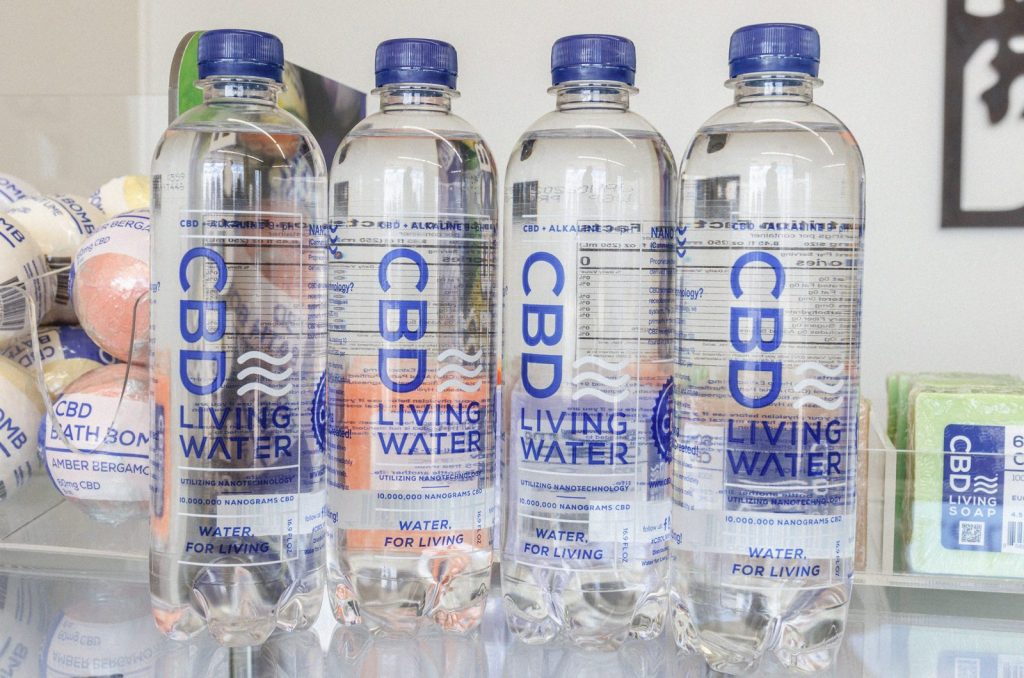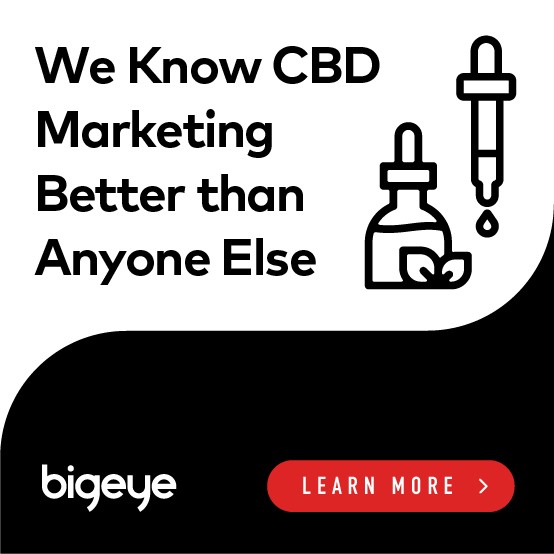
Use our CBD marketing agency tips and tricks to successfully and purposefully break into this growing market rife with opportunity.
According to Market Watch’s 2020 study, the global value for the CBD marketplace will grow to over $1.2 billion by 2024, up from 2019’s value of $311 million. Some optimistic analysts predict even higher growth. Still, a CBD marketing agency would advise any new brands to prepare for challenges. For instance, startup companies need to focus on product differentiation in a competitive marketplace. Also, many consumers still don’t really understand how CBD might benefit them or even exactly what it is.
Consider some informed CBD eCommerce tips to help inspire a robust, effective, and safe marketing plan.
The CBD marketing agency guide for eCommerce
Even though CBD comes from cannabis, it’s not psychoactive, like THC. Also, unlike THC, another cannabis extract, the 2018 Farm Bill made CBD legal federally and in most states. Studies have offered support for claims that it can help relieve a range of health issues, including seizures, migraines, insomnia, inflammation, poor appetite, and anxiety in both people and animals.
With all of these benefits, it’s important to understand that the growing popularity of the product and ease of entering the market have generated plenty of competition and more than a little scrutiny from the government.
Five ways to improve CBD product sales
These five CBD advertising and marketing suggestions can help a new or struggling CBD business meet competition and stay out of trouble with regulators:
1. Define the Product’s Market
It’s impossible to give a one-size-fits-all solution for CBD advertising because businesses might deliver their offers as pharmaceutical, cosmetic, food, pet, or other kinds of products. That’s why it’s important for businesses to map out specific benefits they hope to promote. Then, they can offer this solution to the best audience.
For instance, one company may promote a high-grade pharma product to help reduce seizures. Another brand may have a topical solution to ease skin flareups. Still, another business may offer pet supplements that they promote to help reduce anxiety or joint issues in aging dogs.
Obviously, these very different products will need specific buyer personas and marketing approaches. They may also need to meet different standards for the sorts of claims that can be made to stay within legal restrictions for medical vs. consumer advertising. Mostly, it’s helpful to market to people with problems the product might solve and not just look for consumers with an existing interest in CBD.
2. Explore Alternative Programmatic Advertising for CBD
Programmatic advertising refers to buying ad slots with bids on an automated system. They can benefit marketers because they keep a lot of information about their audience. That allows advertisers to use very specific attributes, like age, location, or even past viewing habits, to select who will see the ads. Obviously, this kind of advertising can offer value to CBD advertisers who understand their market.
Some of the most common platforms that use this kind of bidding platform include Facebook and Google. These are mentioned because they’re familiar to most marketers. At the same time, these and other common platforms impose restrictions on the way companies can promote any cannabis product, including CBD.
As a note, these kinds of platforms tend to get associated mostly with internet marketing. It’s also possible to find programmatic advertising for TV, radio, and other kinds of media.
Either alone or with the help of a CBD marketing agency, businesses can also explore some programmatic advertising advertising platforms that offer more flexibility for both products and the way companies advertise them. As an example, Cannabis Creative, a marketing agency. mentioned that Facebook and Google account for a large share of total advertising spend on programmatic ad platforms. At the same time, other paid platforms still attract very large audiences can can open up less-restricted promotions on such large and well-known outlets as ESPN, USA Today, and Politico.
3. Remain aware of legal and platform CBD advertising restrictions
Even though CBD doesn’t have the psychoactive effects that some people may associate with cannabis products, it hasn’t been legal in most places for very long. Brands need to take care to conform with marketing regulations, both at the federal and sometimes, at different state or local levels. In order to maintain accounts with various marketing platforms, companies also must take the time to understand the terms of service. And sometimes, these can prove hard to understand because the language isn’t direct.
Avoiding legal problems
According to Bradley, a media law firm, the growth of consumer protection regulations has paralleled the overall expansion of the CBD market. As an example, both the FTC and FDA have sent warning letters to companies that didn’t exercise enough caution when making claims that their products could treat various medical issues.
As a general rule, neither CBD packaging design or advertising should not:
- Mention specific diseases
- Cite dubious sources to backup explicit or inferred claims
- Use words like treat, cure, or prevent
- Guarantee results
Obviously, marketers need to promote potential benefits in order to attract the attention of customers. Doing this well without attracting negative attention from the government takes some craft and attention to only linking to or mentioning credible studies or professionals. For instance, it’ might be fine to claim that a CBD cream may help soothe skin but not that it cures eczema.
Notice that the page for a pet product called Calming Chews does not feature another mention of that benefit. The list of features simply talks about the product’s purity, that it doesn’t contain THC, and that it was grown organically. It also mentioned that the product was tested in a lab for safety and effectiveness, but it never says what it was tested to be effective for.
Further down, they offer some vague language that says the product combines CBD with some calming herbs. They’re implying their benefits, but they’re probably avoiding a direct statement to remain in compliance. That’s why startups may want to work with experienced marketing agencies and even media lawyers to ensure they understand the dynamic legal environment.
Avoiding service violations on advertising platforms
While businesses need to prioritize staying out of legal trouble with regulatory agencies, they also need to focus on maintaining their advertising accounts. As recently as late in 2019, Huffington post published an article about Facebook’s “secret” CBD ban. Marketers found that Facebook had terminated their advertising accounts for violating terms that were hard to even know existed.
Apparently, Facebook didn’t have any specific, public policy at the time about CBD. At the same time, they apparently did have an internal policy. It’s just that even first-time offenders of this policy had accounts completely terminated. Meanwhile, other advertisers who may have just been lucky at first, found ways to promote landing pages with topical CBD products; however, they didn’t specifically mention CBD in the ads. The pervious statement was not intended as advice but just an example to illustrate the caution.
As a note, the Pinterest terms of service for paid ads specifically prohibit products with CBD. Other platforms, including Instagram, Google, and YouTube, also have complex terms. In any case, before using any marketing platform to promote CBD products with paid advertising, it’s important to do some research or work with an experienced CBD marketing agency to ensure compliance with platform rules that can change at any time, not be well documented, and may even not get enforced exactly the same way each time.
4. Benefit from social and content marketing
The section above mentioned that many advertising platforms for social sites have restrictions or even outright bans on CBD products. These same rules don’t necessarily apply to the kinds of social posts that aren’t promoted via the advertising platform on the site. Social Media Explorer said that many CBD advertisers had managed to fare very well by using content, inbound marketing, and non-promoted social posts.
These are some examples of tested tactics to promote within this strategy:
- Create informational videos: Even with all the buzz about the Farm Bill, lots of people really don’t know the difference between non-psychoactive CBD, THC, and other cannabis substances. Even if some of these consumers do know, they may not realize that CBD might offer a solution for some issue they might have. While it’s still wise to take care when making claims, an informational video that uses credible studies and sources to back up the benefits that some people say they’ve experienced should work well.
- Brand ambassador programs: Lots of eCommerce platforms create a program that helps reward loyal customers for spreading the word about products they already buy and love. Typically, the brand ambassador will get a unique that they can use if they mention the product, and if somebody else buys, the loyal customer will get rewards the can use for discounts or free gifts. This sort of word-of-mouth advertising generally works very well and can prove much cheaper than paying for ads anyway.
- Influencer marketing: Social influencer refers to people who already have a targeted audience on various social platforms. Depending upon the product, good influencers might work within the fitness, health, beauty, or even pet care niche. Having them demonstrate or even mention a brand can provide new companies with a lot of name recognition and a boost for their own social platform.
- Try multiple platforms: With social marketing, it’s not possible to target as precisely as it is with programmatic ads. Still, content and even CBD packaging design can work to attract the right audience. At the same time, it’s probably best to consider the pros and cons of various social sites to see which ones have the most receptive audience. For instance, Twitter users tend to be younger than Facebook users, while Pinterest is known for attracting a lot of women. While short videos may perform well on Instagram and Facebook, YouTube has a reputation for more engaged viewers for longer videos. While it’s important not to get spread too thin, it’s also a good idea to focus on a few platforms to see which combination yields the best results.
- Build connections: These days, consumers do turn to social platforms both to research products and even to get help with customer service. It might sound trite to say this, but some businesses still ignore comments about their brands or even direct messages. In order to benefit from social media, companies need to engage. In addition to monitoring messages and their own pages, brands can use software that will monitor any mentions of their brands to help them make timely responses.
Develop the best content mix
After deciding to attract attention with content, it’s also important to select the right mix of content types. The platform, target audience, and many other factors might determine which kind of content works best for each particular situation. Common examples of content for social media, business blogs, and even outreach posts include text, graphics, and videos.
Digging even deeper, some CBD companies have enjoyed success with long-form white papers and even live webinars and podcasts. Some potential topics might include:
- Answers to frequently asked questions
- A discussion of the difference between CBD and THC
- The history of CBD use
- An interview with an authoritative guest
Actually, consider any topic that might interest the target market. While a company may want to avoid associating benefits with any specific medical conditions, exploring that medical condition from another angle should still attract the right sets of eyes. For instance, prudent marketers may never want to suggest that CBD is guaranteed to relieve anxiety.
Still, they might produces sponsored videos with stress-relief meditation, yoga poses, or breathing exercises and then incorporate a call to action that leads to a landing page. They can clearly associate their product with stress relief without guaranteeing results.
It may also help to vary the length and format of various types of content for different purposes. As a simple example, short, to-the-point videos may help engage people on social sites. A long and more thoughtful video might help close sales on a business blog or YouTube.
5. Maximize eCommerce site conversions
The previous tips will help CBD marketers attract a targeted audience to an eCommerce site. Of course, the final ingredient to maximize sales means taking steps that will ensure those site visitors convert into customers. According to BigCommerce, average eCommerce sites expect conversion rates of no more than one to two percent. If the right tactics can increase conversions to better than average, they’ll translate into better marketing returns and of course, increased revenues and profits.
- Respond to abandoned shopping carts: Automated tools can send emails to people who have signed up but failed to click the buy button. A discount coupon or special promo code for first-time buyers will motivate some of these almost-buyers to return to their cart.
- State the unique selling proposition on each page: Within the confines of legal verbiage, make sure customers understand the benefits they can expect from the product. Beyond that, it’s a good idea to let customers know about return policies and other considerations that might hold them back.
- Highlight CBD packaging design: As with marketing messages, CBD packaging design can be tricky. Since all new customers see is a photo of the package, companies need their design to create a great first impression and clearly illustrate what the product is, such as a supplement or beauty product. At the same time, SmashBrand mentioned some potential federal and state legal requirements for packaging. In any case, clear images of a aesthetically pleasing and legal design will help build customer trust.
Selling CBD products in a growing but competitive marketplace
Before engaging in any CBD advertising, businesses need to clearly define potential benefits of their products and in turn, their target market. Once that’s done, the retailer can find the best marketing platforms with both legal and platform restrictions on advertising in mind. While programmatic advertising can rapidly increase exposures and sales, some of these paid advertisers have restrictions on CBD marketing, so it’s important to choose carefully and also consider inbound, content marketing as an alternative to only relying upon paid ads. Finally, make sure to tailor both packaging design and the sales pages to maximize conversions and conform to regulations for cannabis products.
Mostly, CBD businesses have a great opportunity to enter this growing market. By marketing aggressively but safely, marketers can stay out of trouble with regulatory bodies and build trust with an expanding audience.



